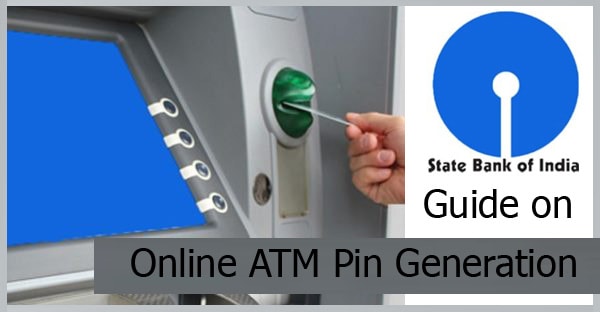State Bank of India is the largest baking service provider in India. SBI in early 2016 launched its SBI Green PIN Service. In this service, the customer of SBI can Generate the AT PIN for their Debit Card via SMS, ATM, and IVR. People can even use these process to change and generate new pin in case of forgot pin.

You can Apply for Debit Card online and there is no need for visiting any branch for Debit Card Generation, you can do it from home.
Generate SBI ATM (Debit Card) PIN Through SMS
Follow the steps to Generate the SBI ATM PIN via SMS.
Step 1– Send an SMS to 567676 from your Registered Mobile Number(RMN) in the format mentioned below.
PIN<space>xxxx<space>yyyy
- Replace ‘xxxx’ with the last 4 digits of your SBI Debit Card.
- and ‘yyyy’ with the last four digits of your Account Number.
Example- SMS: 567676
PIN 1234 4321
Step 2- Now you will get an OTP(One Time Password). You can use this OTP to generate new Debit card ATM PIN from any nearest SBI ATM Machine by Selecting Banking > PIN Change.
Generate SBI ATM Pin Through IVR
Follow the steps to Generate the ATM PIN via IVR
Step 1– CALL 1800 112211 or 1800 425 3800 from you SBI Registered Mobile Number (RMN)
Step 2- Dial your 16 digit SBI Debit Card Number when asked for.
Step 3- Enter your SBI Account Number
Step 4– you will get an OTP (One Time Password) on your mobile phone. You can use this OTP to generate new Debit card ATM PIN from any nearest SBI ATM Machine.
SBI Debit Card Pin Generation Through ATM
Follow the steps to Generate the ATM PIN via ATM.
Step 1- Visit the nearest SBI ATM and insert your Debit Card.a
Step 2- Click on the ‘PIN Generation‘ button placed at the bottom right of the screen.
Step 3– Enter your ‘Account Number’
Step 4– Enter your registered Mobile Number(RMN) twice and confirm it
Step 5-A message will pop up “PIN Shall be received on the Registered Mobile Number” click on the confirm button.
Step 6- Now you will get an OTP (One Time Password). You can use this OTP to generate new Debit card ATM PIN by Selecting Banking > PIN Change.
SBI ATM Pin Generation Through Net Banking
Follow the steps to Generate the ATM PIN via Online.
Step1– Login to Online SBI Account (https://www.onlinesbi.com)
Step 2-Enter Online SBI User Name and Password.
Step 3- Click on ‘e-Services’ then ‘ATM Card Services’.
Step 4– Click on ‘ATM Pin Generation’.
Step 5- There will be two option choose one
- Profile Password
- One Time Password (OTP)
Step 6– If you select ‘Using Profile Password’ option, you will be taken to a new page where you need to select the account linked to the debit card, for which you need to generate the PIN. Select the card and click ‘Submit’
Step 7- Enter the OTP received (if selected OTP method)
Step 8- Select the one for which you need to generate a new PIN or change existing PIN and click ‘Confirm’.
Step 9– Enter any two digits to create a new PIN. Enter the digits and click ‘Submit’.
Step 10– You will receive the last two numbers of your PIN through SMS on your Registered Mobile Number.
Step 11- Enter four digits of your new PIN. Enter the two digits you have chosen earlier and the last two digits from your SMS and click ‘Submit’
You will now see a message, which says “Your ATM PIN has been changed successfully”.
What is RMN in SBI?
RMN stand for Registered Mobile Number. It is the number that is used by the SBI Bank to contact you. Keeping your RMN up to date is very important as net banking, as well as other banking services, can only be used if you can get OTP on your Registered Mobile Number. Another major use of RMN for easy banking is SBI Missed Call Number Banking which enables its user to check their bank balance by just giving a missed call.
If you do not have your mobile number registered with your SBI Bank Branch then you can register your mobile number and failure in doing so will result in unable to use the Net banking services from 1st Dec 2018, as per the RBI Guidelines.



